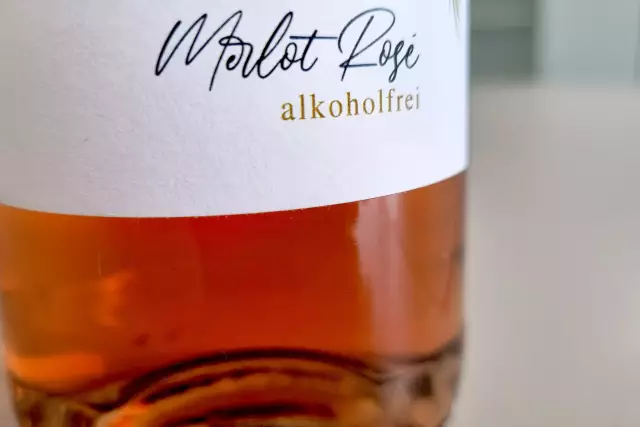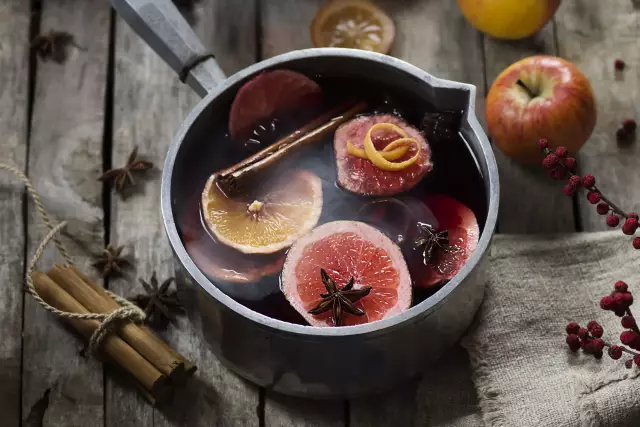Rosé
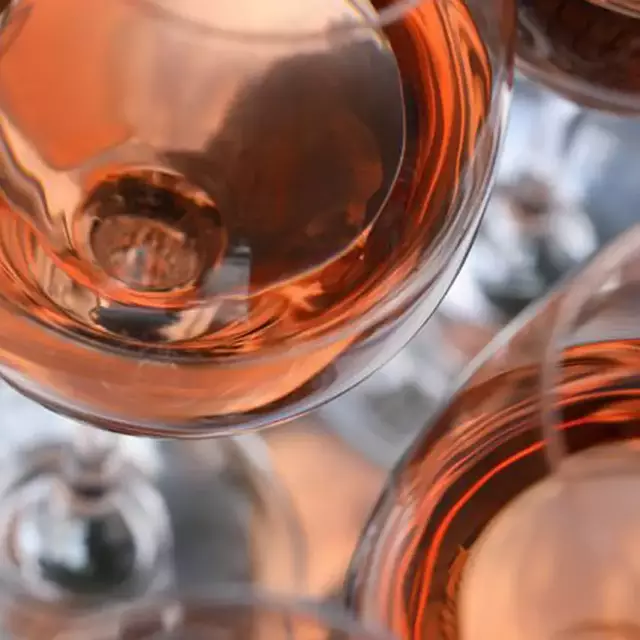
Facts
How is Rosé wine made?
In order to create Rosé, the red grapes are only lightly pressed initially. The so-called mash resulting from this light pressing is then left to rest for a while, to give the pigments in the grape skin time to colour the juice. Once the grape juice has taken on the desired shade of pink, the mash is pressed fully and the rosé-coloured juice is fermented into wine.
But not every rosé-coloured wine is called “Rosé”. Sometimes, you’ll find the term “Weißherbst” on the label. Since Weißherbst, as opposed to rosé, is always a single variety wine, the grape variety used in its production also has to be mentioned on the label. However, the term Rosé is more recognized internationally.
Varieties
Another rosé-coloured wine you might come across is Rotling. This is a special variety of rosé wine, produced by the joint pressing and fermentation of red and white wine grapes.
The so-called “Schillerwein” is a traditional Rotling from the wine-growing region Württemberg. No particular grape varieties are stipulated to produce Schillerwein.
Rosé wines are suitable companions at any time of the year. As a rule, they are served at a drinking temperature of 9-13 degrees centigrade, but during the warm summer months you might choose to cool them down even further, since they will warm up faster in higher ambient temperatures.
Enjoyment
Rosé and Weißherbst wines and their sparkling varieties make for a delightful aperitif or a companion for starters such as tapas and antipasti. We also recommend them with selected fish and barbecue dishes. Since they are naturally low in fruit acids and tannins, many wine lovers also enjoy having them with Asian specialities such as curries or Thai food. Also try mild, semi-hard cheeses such as Edam or young Gouda with delicately fresh and dry rosé-coloured wines: perfect harmony.
And, naturally, Rosé and Weißherbst wines are great partners for a fresh and fruity summer punch. Have a Pinot Noir Rosé together with strawberries and marvel at a combination that will not just tickle your taste buds but also please your sense of colour.
Which grape varieties make up "Badisch Rotgold" - a type of Rotling?
By definition: A "Badisch Rotgold" is composed of Pinot Gris and Pinot Noir and as the name suggests it comes from the Baden growing region.
Varietals

More recipe ideas
with fresh chanterelles Autumn bruschetta
with fresh chanterelles
- 4 Ciabatta-Brötchen
- 200 Gramm kleine Pfifferlinge
- 4 EL kleingehackte Petersilie
- 4 Zehen Knoblauch
- 80 Gramm Pecorino (Hartkäse)
- 8 EL kaltgepresstes Olivenöl
- Eine Prise Salz & Pfeffer
Preheat the oven to 200 degrees.
Clean the chanterelles. Sauté the parsley in a pan with half of the oil, then add the mushrooms and cook over a low heat for approx. 5 minutes.
Slice the rolls and bake for approx. 5 minutes until crispy.
Chop the garlic into small pieces, spread on the warm bread rolls and drizzle with the other half of the oil. Coarsely grate the pecorino.
Stir the chanterelle and parsley mixture into the pecorino and spread over the halves of the rolls.
- Pinot Gris (trocken)
- Federweißer (brut nature)

a Christmassy dessert Plum roaster with cinnamon ice cream
a Christmassy dessert
- 1 kg Zwetschgen (frisch oder TK)
- 100 Gramm Zucker
- 0.5 TL gemahlener Zimt
- Eine Prise Nelkenpulver
- 50 ml Pflaumenschnaps
- 50 Gramm dunkler Rohrzucker
- 2 EL alter Balsamicoessig
- 200 Gramm Zucker
- 4 Eigelb
- 500 ml Sahne
Plum rings:
Wash, deseed and quarter the plums. Spread the sugar evenly in a non-stick pan and melt slowly over a medium heat. Increase the temperature and immediately add the fruit, schnapps and spices. Stir until the mixture caramelises.
Stir in the muscovado sugar and balsamic vinegar, spread onto a cold plate after approx. 3 minutes.
<p
<p>Cinnamon ice cream:
Combine the sugar and egg yolks and stir the two ingredients over a bain-marie until frothy.
Whip the cream, then carefully mix both mixtures and add three teaspoons of cinnamon. Carefully mix the cinnamon into the mixture again.
Pour the finished mixture into any (cake) tin or small dish, cover with aluminium foil and place in the freezer for at least three hours.
Place the plums on four deep plates or small bowls, cut off 2 – 3 ice lollies each and place on top, serve immediately.
- Gewürztraminer (trocken)
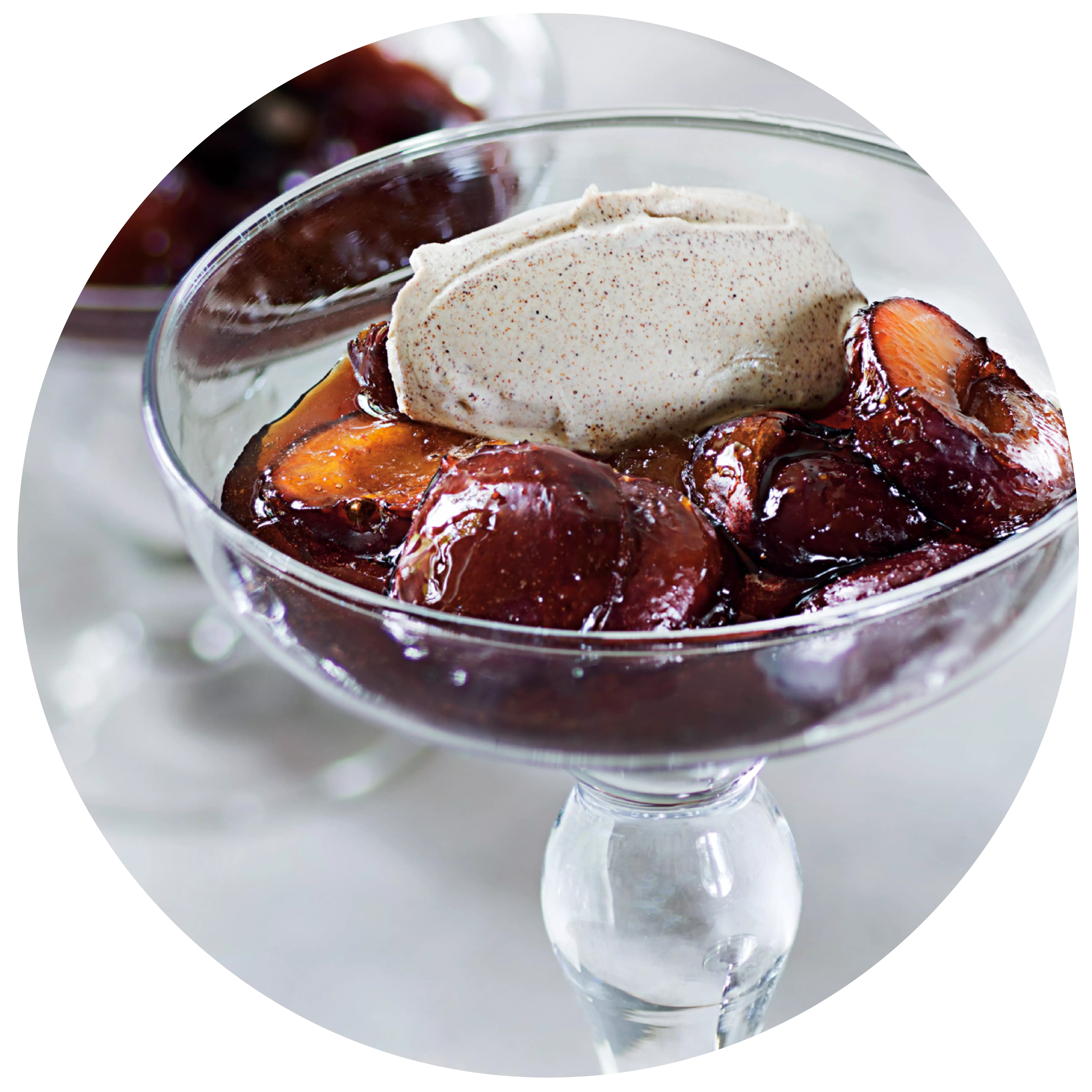
the "Frankfurt Green Sauce" Quiche with herbs
the "Frankfurt Green Sauce"
- 200 Gramm Mehl
- 100 Gramm Butter
- je 1 Bund Kräuter für Frankfurter Grüne Sauce (Petersilie, Kresse, Kerbel, Borretsch, Sauerampfer, Schnittlauch, Pimpernelle)
- 100 - 125 Gramm Schwarzwälder Schinken
- 7 ganze Eier
- 125 ml Sahne
- 100 Gramm Frischkäse
- 1 EL Zitronensaft
- nach Geschmack Salz & Pfeffer
Knead the flour and butter with 4 tbsp water and a teaspoon of salt to form a smooth dough. Line a mould with it and leave to cool for 30 minutes.</p
<p>Hard boil 4 eggs. Wash, drain and finely chop the herbs from the Frankfurt green sauce. Cut the ham into wafer-thin slices and spread on the pastry base. Chop the hard-boiled eggs into small
and spread over the top. Mix the 3 eggs, cream and fresh cheese and season with 1 tbsp lemon juice, salt and pepper, then fold in the herbs. Spread the mixture over the pastry base.
Bake at 180 °C (gas mark 4) on the middle shelf of the oven for about 30 minutes.
- Riesling (trocken)
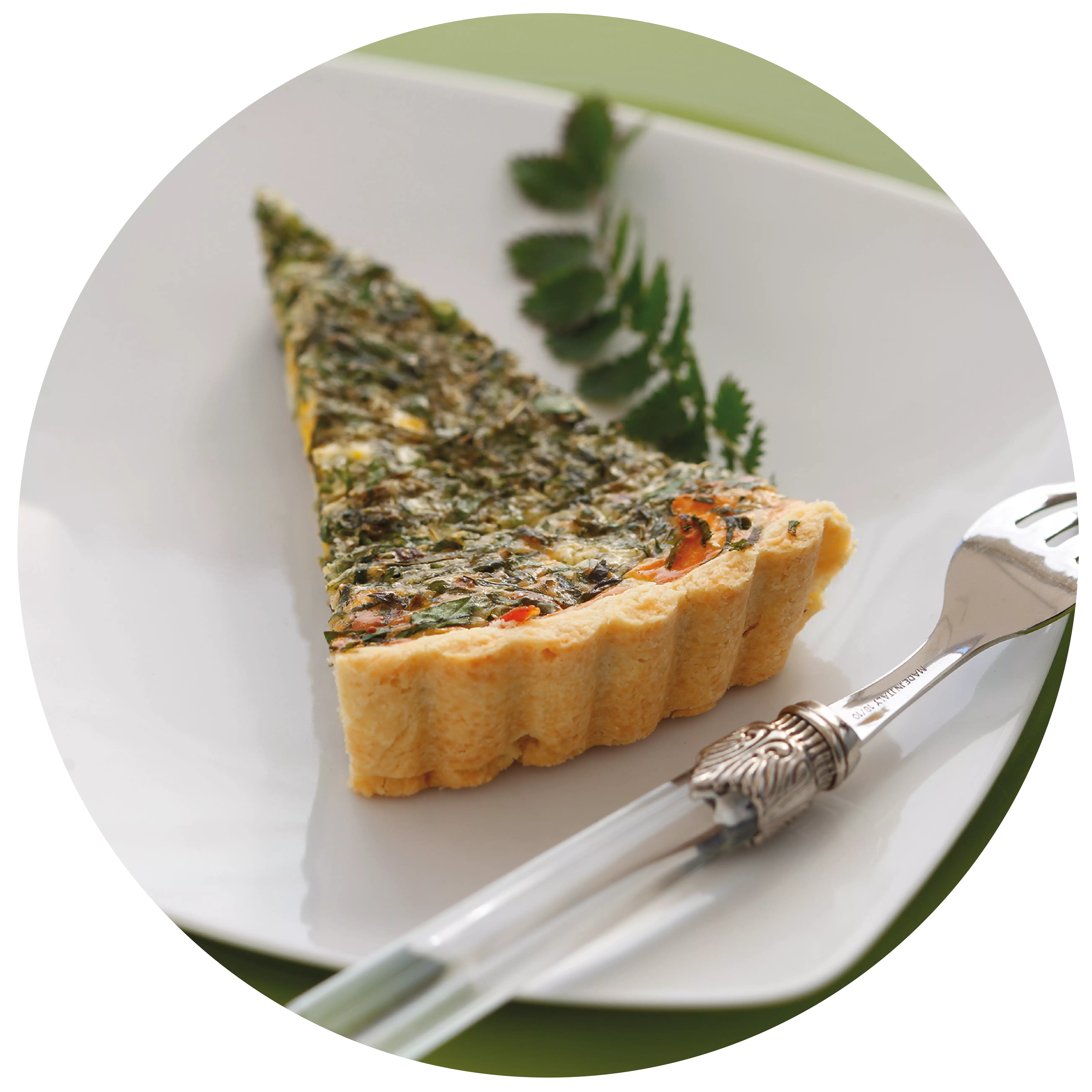
with pears, beans, parsley root and black walnuts Venison medallions
with pears, beans, parsley root and black walnuts
- 12 Stück Rehmedaillions (a 80g)
- 30 Gramm gebratene Speckstreifen
- 200 ml Bechamelsauce
- 3 EL Sonnenblumenöl
- 8 kleine Petersilienwurzeln mit Grün (alternativ Knollensellerie)
- 6 - 8 breite Schnippelbohnen
- 1 große Birne
- 4 - 6 schwarze Walnüsse
- 100 ml Wildfond
- 2 EL Butter
- 2 Stängel glatte Petersilie
- nach Geschmack Salz
Preheat the oven to 180 °C top and bottom heat. Clean, peel and trim the parsley roots. Clean the beans and cut into diagonal pieces. Blanch the parsley roots and beans separately in boiling salted water and rinse immediately in iced water.
Cut the walnuts into eighths and warm in the game stock. Wash the unpeeled pear, cut into eighths, remove the core and cut into thin slices. Fry the venison medallions on both sides in oil, then finish cooking in the oven for approx. 3 - 5 minutes.
In the meantime, toss the beans and parsley roots in melted butter and season with salt. Arrange the vegetables with the black walnuts and pear slices on large plates. Place the medallions on top, garnish with game stock, Béchamel sauce and bacon strips.
Tip: You can make your own black walnuts. To do this, prick the walnuts all over with a fork or skewer and place in water for 10 days. Change the water every day so that the tannic acid can drain off. Boil the nuts 3 times in salted water until they are deep black. Simmer with bay leaves and peppercorns for approx. 20 minutes until soft. Layer in preserving jars and cover with syrup. The nuts can be kept for approx. 1 year.
- Spätburgunder / Pinot Noir (trocken)
- Pinot Gris (trocken)
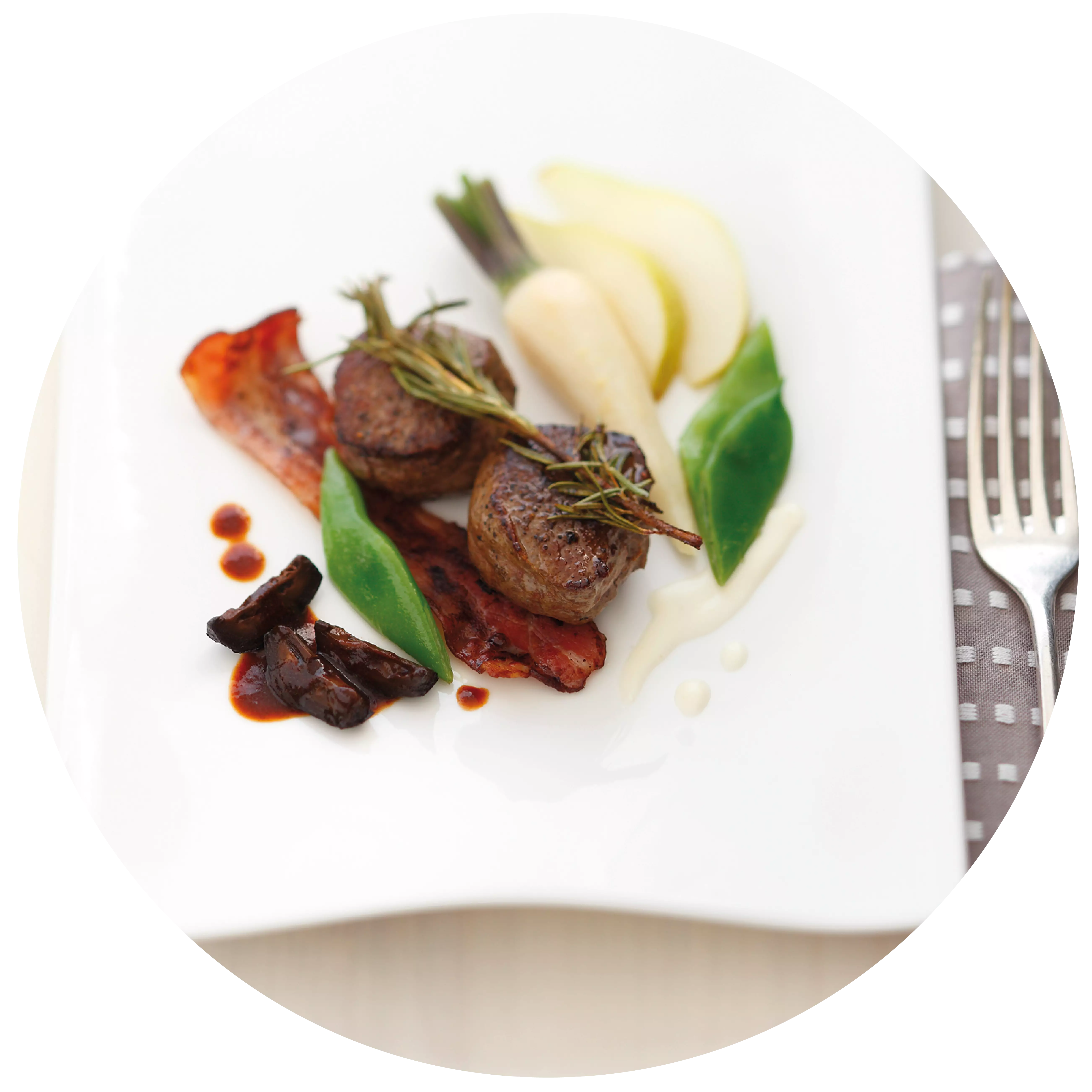
Events
-
Show
winetasting in our winery - cheese & wine
Mainz-Hechtsheim



